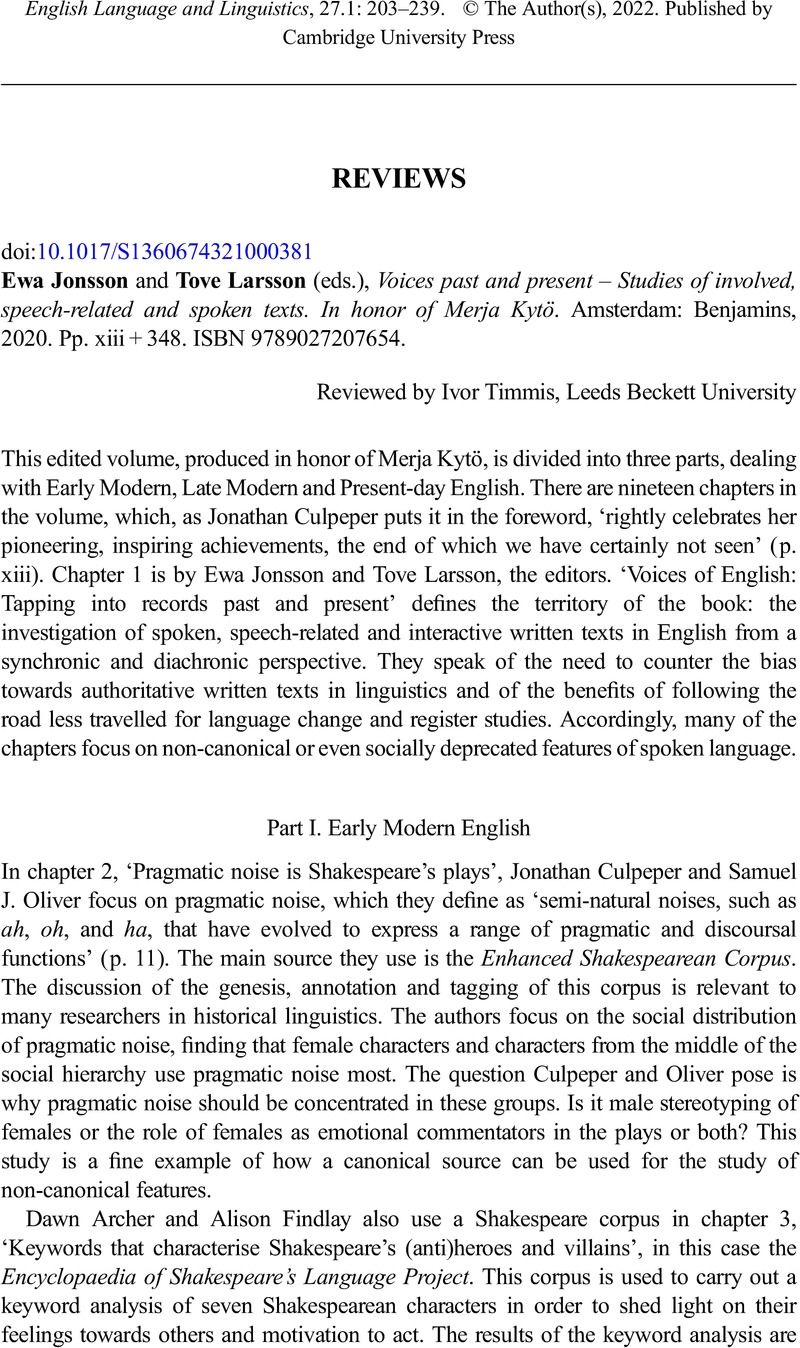No CrossRef data available.
Article contents
Ewa Jonsson and Tove Larsson (eds.), Voices past and present – Studies of involved, speech-related and spoken texts. In honor of Merja Kytö. Amsterdam: Benjamins, 2020. Pp. xiii + 348. ISBN 9789027207654.
Review products
Ewa Jonsson and Tove Larsson (eds.), Voices past and present – Studies of involved, speech-related and spoken texts. In honor of Merja Kytö. Amsterdam: Benjamins, 2020. Pp. xiii + 348. ISBN 9789027207654.
Published online by Cambridge University Press: 23 November 2022
Abstract
An abstract is not available for this content so a preview has been provided. Please use the Get access link above for information on how to access this content.

- Type
- Book Review
- Information
- Copyright
- Copyright © The Author(s), 2022. Published by Cambridge University Press
References
Timmis, Ivor S. 2020. The discourse of desperation: Late nineteenth and early twentieth century letters by paupers, prisoners and rogues. London: Routledge.CrossRefGoogle Scholar



